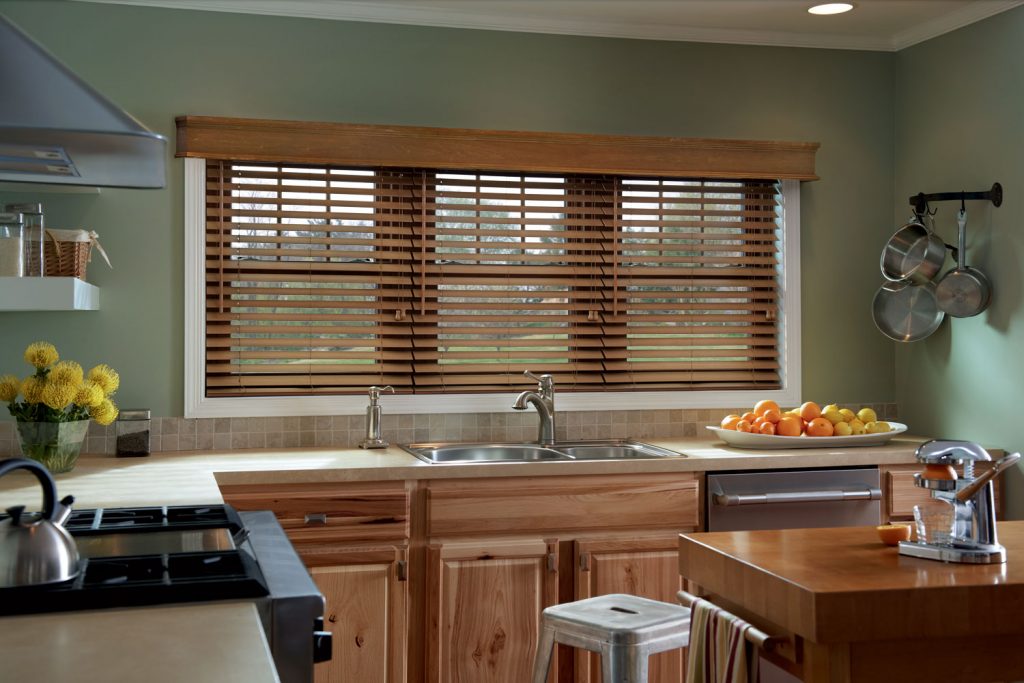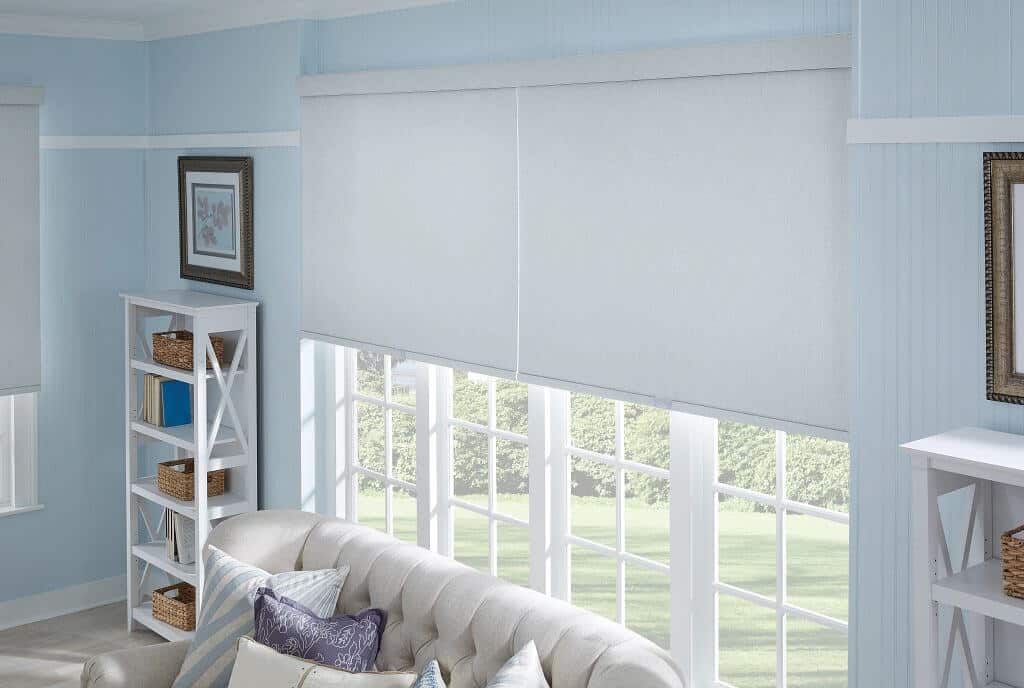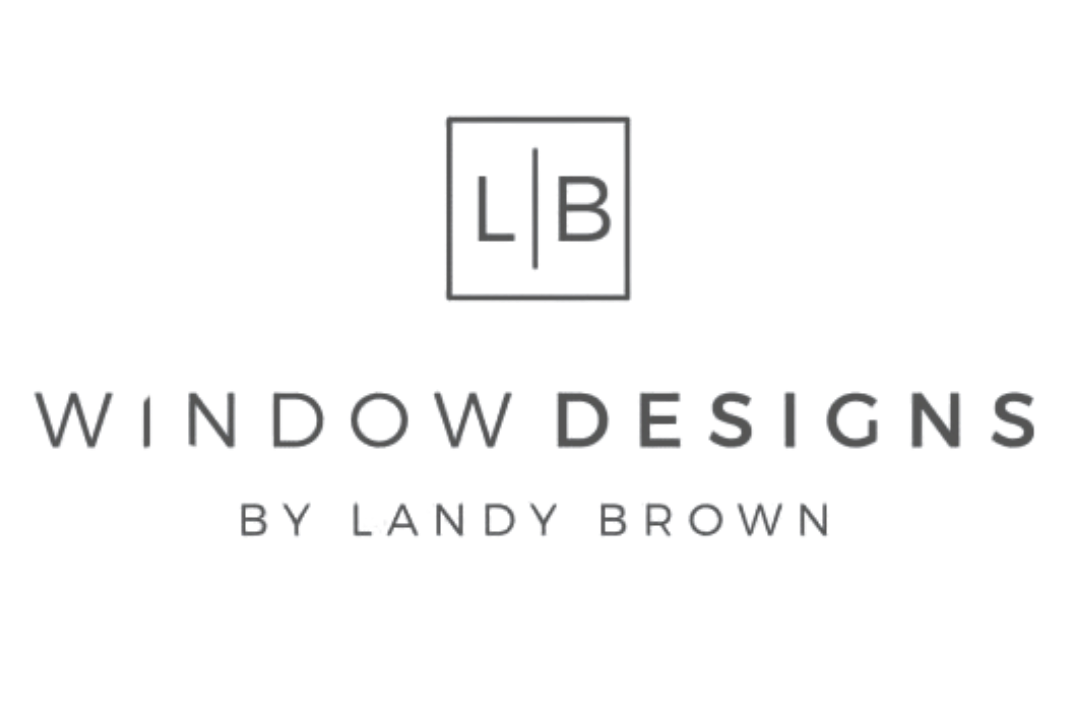Enhancing Aesthetics and Functionality in Your Oconomowoc, WI Home
In this post, we will explore window treatment materials and fabrics including both hard and soft window treatments, highlighting the materials used in each category, as well as their aesthetic appeal and functional benefits.
Choosing the right window treatments for your home is crucial for both style and functionality. From enhancing aesthetics to improving light control, privacy, and insulation, the materials you select play a significant role in how your window treatments will perform. Whether you’re outfitting a cozy living room or a bedroom, it’s essential to understand the differences between hard and soft window treatments, as well as the materials that best suit your needs.
At Window Designs by Landy Brown, we offer a wide selection of window coverings made from premium materials, including wood, metal, and textiles, for homes in Oconomowoc, WI, and surrounding areas.
Hard Window Treatments: Durability and Precision
Hard window treatments typically include blinds, shutters, and shades made from solid materials like wood, metal, or synthetic products. These window treatments offer excellent control over light, privacy, and insulation, and they are typically more durable and easier to maintain than soft window treatments. Let’s look at some of the materials commonly used for hard window treatments.
1. Wood: Classic Elegance and Natural Insulation
Wooden window treatments are a timeless option, offering natural beauty, warmth, and an elegant aesthetic. Wood can be used for blinds, shutters, and woven wood shades, all of which add sophistication to any room.
Aesthetic Appeal
Wooden window treatments provide a timeless, elegant look that complements a variety of interior styles, from traditional to modern. The natural grain of wood adds texture and warmth to any room, whether you choose rich walnut, light oak, or exotic bamboo. Wooden shutters and woven wood shades create an organic, earthy ambiance, perfect for a rustic or nature-inspired home.

Functional Benefits
Wood is an excellent natural insulator, helping to regulate indoor temperature and reduce energy costs. Additionally, wooden blinds offer precise light control, allowing you to adjust the slats to your preference. Woven wood shades allow for soft, diffused light to filter into your home, while still providing privacy. For energy efficiency and insulation, wooden shutters are also a highly durable choice that can help keep your home comfortable year-round.
2. Metal: Sleek, Modern, and Durable
For those seeking a more contemporary look, metal window treatments are an excellent choice. Aluminum is the most common metal used for blinds and shades, providing a sleek, modern aesthetic with easy maintenance.
Aesthetic Appeal
Metal window treatments, such as aluminum blinds and metal roller shades, offer a clean, minimalist look that fits well in modern, industrial, or urban-inspired spaces. Available in a variety of colors and finishes, metal window treatments can complement a range of design styles, adding a touch of sophistication with a polished finish.
Functional Benefits
Metal window treatments are highly durable, resistant to fading and warping, and are perfect for areas exposed to high humidity, such as kitchens or bathrooms. They are also effective at blocking sunlight and offering complete privacy. Metal blinds are easy to clean and maintain, making them a convenient choice for busy households.
3. Synthetic Materials: Durable and Functional
Synthetic materials such as faux wood or PVC are another option for hard window treatments. These materials are designed to mimic the appearance of natural wood while offering greater durability and resistance to moisture.
Aesthetic Appeal
Faux wood blinds and shutters replicate the look of real wood but are more affordable and resistant to moisture. These synthetic materials come in a variety of finishes, allowing them to blend seamlessly with traditional and contemporary designs.
Functional Benefits
Faux wood materials are ideal for areas prone to humidity, such as bathrooms or kitchens, as they are highly resistant to warping and fading. These materials also provide excellent light control and insulation, making them a versatile and functional option for any room.
Soft Window Treatments: Elegance and Flexibility
Soft window treatments, on the other hand, include curtains, draperies, Roman shades, roller shades, and blinds made of fabric. These treatments offer a soft, inviting aesthetic and are perfect for creating warmth, texture, and a cozy atmosphere. Soft window treatments are often made from fabric-based materials, such as linens, cotton, sustainable fibers, and synthetic blends. Let’s explore the materials and their benefits.
1. Fabric: Versatility and Style
Fabric is the most common material for soft window treatments, offering a wide range of textures, patterns, and colors to complement your home’s décor. Roman shades, roller shades, banded shades, and luxurious linens are some of the most popular fabric-based options.
Aesthetic Appeal
Fabric window treatments add softness and luxury to any room. Luxurious linens provide a sophisticated, elegant look, perfect for bedrooms and living rooms, while banded shades create a modern, clean design. Roman shades offer a traditional aesthetic with a tailored, polished appearance that works well in both casual and formal settings. Textural woven fabrics add a layer of depth and interest to your window treatments.
Functional Benefits
Fabric-based window treatments are highly customizable, with options to filter light, offer privacy, or block out light entirely. Roman shades and roller shades are available in a variety of fabrics, including those made from sustainably sourced materials, giving you eco-friendly choices. The soft texture of fabrics also contributes to room acoustics, helping to reduce noise in large or open spaces.
Additionally, fabric window treatments can help with insulation, keeping rooms cooler in summer and warmer in winter by adding an extra layer of protection against heat loss.

2. Sustainable Fabrics: Eco-Friendly Choices
In today’s eco-conscious world, sustainably sourced materials have become a popular choice for homeowners who want to reduce their environmental footprint while still enjoying stylish window coverings.
Aesthetic Appeal
Sustainable fabrics, such as organic cotton, hemp, and bamboo, bring an earthy, natural feel to the home. These materials can be used for everything from Roman shades to roller shades, creating a green, environmentally friendly atmosphere without compromising on style.
Functional Benefits
Sustainable fabrics offer the same functional benefits as traditional fabrics, including light control and insulation. By choosing sustainable materials, homeowners can feel good about their eco-conscious choices while enjoying high-quality window treatments.
Conclusion: Choosing the Right Window Treatment Materials and Fabrics
Choosing between hard and soft window treatments depends on your home’s style, functionality needs, and personal preferences. Hard window treatments, like wooden blinds, metal blinds, and synthetic materials, offer durability, easy maintenance, and precise control over light and privacy. On the other hand, soft window treatments, such as Roman shades, roller shades, and fabric-based options, provide elegance, versatility, and a cozy ambiance.
At Window Designs by Landy Brown, we offer a wide selection of premium materials for all types of window treatments. Whether you prefer the natural beauty of wood, the sleekness of metal, or the luxury of fabric, we can help you select the perfect window treatments for your Oconomowoc home.
Contact us today at (262) 490-1541 or email Landy@windowsbylandy.com to schedule a consultation and transform your home with beautiful, functional window treatments.

Comments are closed